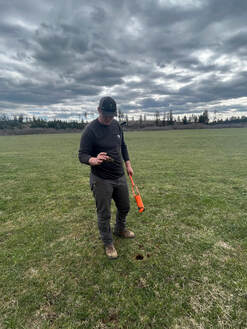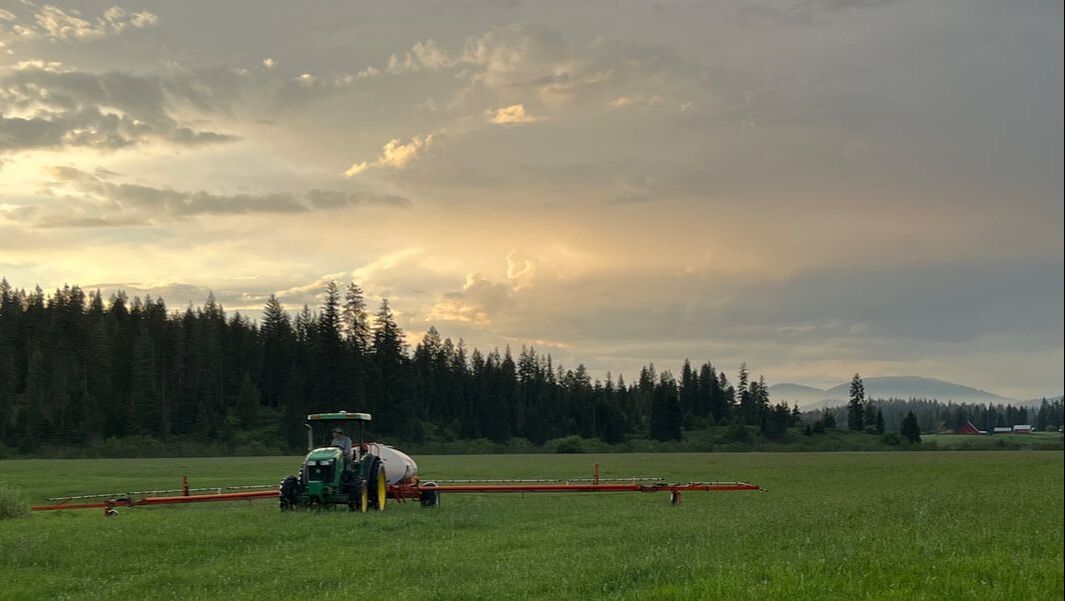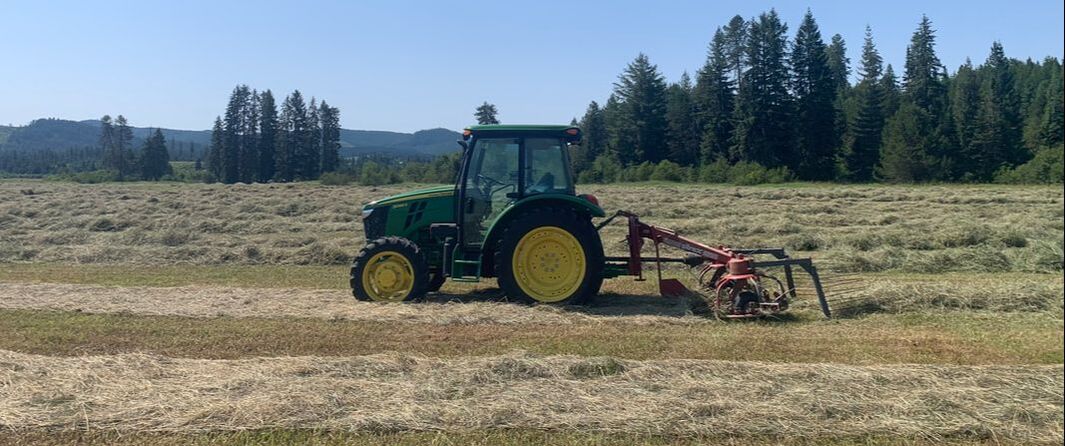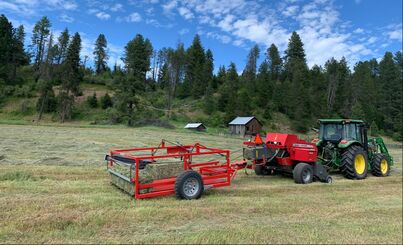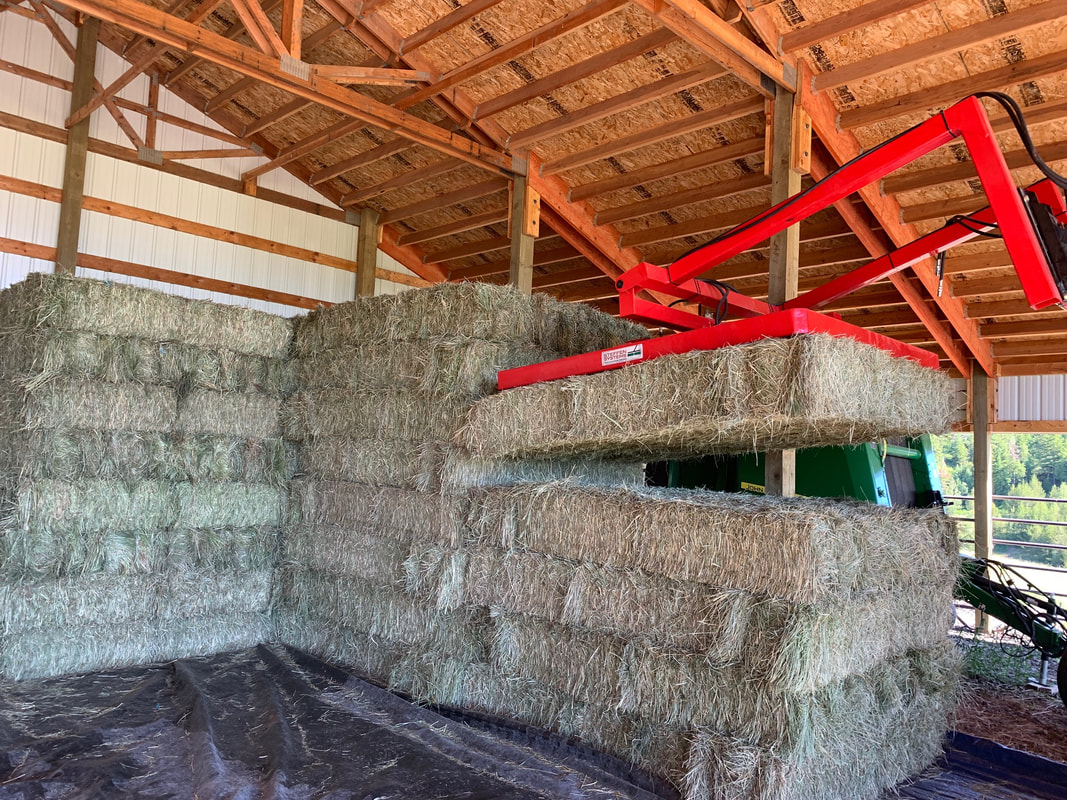During the growing season
Scouting
Fertilizer applications
|
We take soil samples from each field in the spring and fall, and send them to commercial laboratories for nutrient analysis. We apply macronutrient and micronutrient blend fertilizers at the correct level for our production goals. We use liquid formulations that are streamed onto the soil and incorporated by rainfall. We apply fertilizer in both the fall and the spring, following a "spoon-feeding" approach that provides plants with the nutrients when they need them, rather than all at once. We are investigating the logistics of applying compost on a large scale to improve soil organic matter.
|
Harvest time!
Cutting
|
The first step. We cut our hay high, leaving around 4” of standing grass, to allow better recovery and regrowth. We swath our hay with a discbine swather, which cuts cleanly and doesn't have plugging issues in our thick grass. Basically it feels like you are running a giant lawnmower - very satisfying! There are multiple variables we consider when deciding to begin swathing. We always aim to cut as early in the season as possible. This early harvest maximizes the protein, carbohydrate, and nutrient levels while minimizing lignin and non-digestible components. However, the climate is a factor out of our control, and it is very humbling! We need a stretch of forecasted dry weather; rained-on hay loses some water-soluble nutrients, and must sit in a windrow longer to dry, leading to reduced color and palatability. We typically plan for the third week of June. Time of day is also important for hay quality. Generally we aim for afternoon cutting, as the plants have accumulated carbohydrates throughout the day. For “low-sugar” hay for insulin-resistant horses, we will swath early in the morning. And logistically, cutting moves quicker than our baling/stacking. So we cannot cut too many acres at once without compromising hay quality. It's a delicate dance!
|
Drying in windrows
Tedder
Baling
|
Our moisture monitoring systems (both a portable probe and a baler-mounted monitor) help us determine when to bale. Grass hay should be baled below 15% moisture to avoid molding and combustion issues. We aim for 10-12%. Our center-feed small baler picks up the windrow, compresses flakes, and knots strings.
|
Storage
|
Making hay is only half of the process! Once bales are made, they need to be stored properly. Many vitamins, including A and E, lose biological activity over time. Improper storage accelerates this loss. Sun bleaching isn’t ideal, and molding is a serious concern. Especially in the north Idaho/eastern Washington area, the silt loam soils retain moisture that moves to the surface via capillary action even in summer. Dews are often heavy. This moisture can easily lead to damp bales and mold formation. On the same day they're baled, we transport our bales to a hay barn or to a field stack (with tarps on bottom, top, and sides).
|
